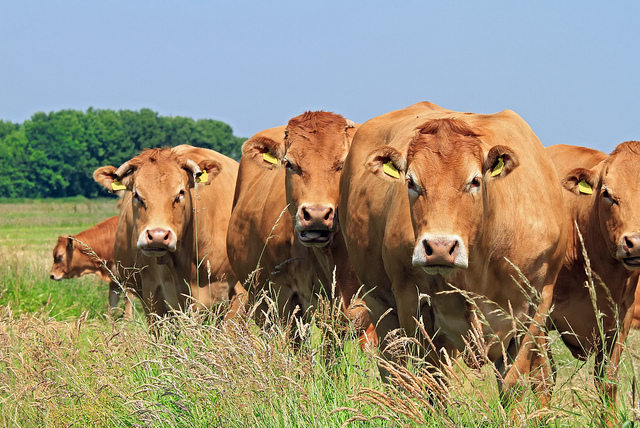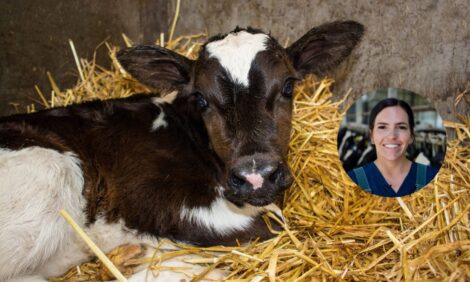



Controlling Flies on Pastured Cattle
Horn flies, face flies, and stable flies are not just irritants to livestock, but are also economically important to producers due to negative impacts on milk production and calf weaning weights, according to the South Dakota State University iGrow service.In addition, they can affect grazing distribution and transmit eye diseases such as pinkeye and infectious bovine rhinotracheitis (IBR). It is difficult to predict what fly levels will be like for any given year, but hot, dry weather usually results in high numbers.

Horn flies
Horn flies are one of the most common and harmful insect pests that affect cattle during the summertime. Horn flies are about 1/2 to 1/3 the size of the common house fly.
As adults, they spend most of their time on cattle, piercing the skin of host animals to suck blood. Horn flies may take between 30 and 40 blood meals per day. If left untreated, densities of horn flies may reach several hundred flies per animal by mid-summer.
If fly populations are high (over 200-300 flies per animal), multiple methods of treatment may be required. Options include dust bags, feed additives, sprays, pour-ons, and insecticide ear tags.
Dust bags or oilers may be either force-used (placed in an area that animals must pass through) or free choice. They offer good control, but require time to be spent checking and repairing bags.
Feed additive products contain insecticides that pass through the animal’s digestive system and kill horn fly larvae in the manure. While these additives are effective in reducing the number of larvae, this does not necessarily correlate to a reduction in the number of adults since flies will migrate to and from neighbouring herds. It is also difficult to ensure effective intake levels of these feed additives.
Sprays and pour-ons require applications every 2 to 3 weeks, which may not be feasible for some producers’ summer grazing situations.
Ear tags contain an insecticide that moves from the surface of the tag to the coat of the animal. They are easy to apply and can be effective; however, there is a history of horn fly resistance to active ingredients used in some of the tags. Therefore it is important to ensure high quality tags are used, and that the same insecticide is not used repeatedly.
Researchers at the University of Nebraska-Lincoln have conducted trials on some of the newer options available for horn fly control, including insecticide strips that attach to the button side of an existing ear tag and CO2-powered device that delivers pyrethroid. Both of these methods appear to result in acceptable control, with reported reductions in horn fly populations between 81 per cent and 89 per cent.
Face Flies
Face flies resemble house flies but are slightly larger and darker. They are non-biting flies that cluster around animals’ eyes, mouth, and muzzle to feed on animal secretions. Face flies can cause damage to eye tissues which can predispose animals to infection, and control of these pests is essential in controlling pinkeye.
Because of the locations on the animal in which face flies feed and the fact that these flies are not on the animal most of the time, control of face flies can be difficult. Effective control may require more than one method of treatment, including the use of insecticide ear tags, dust bags, and sprays. In contrast to horn flies, both cows and calves must be treated in order to reduce face fly populations.
Stable Flies
Stable flies are the size of a house fly but darker in colour. These are blood-feeding flies that mainly feed on the front legs.
The most common sites for development of stable flies are feedlots or dairies, as larvae develop in decaying organic matter such as wet hay. However, they can also be found on pastures, particularly around winter hay feeding sites.
Cattle often react to stable flies by bunching, stomping their legs, or standing in water. This can disrupt grazing patterns.
Because stable flies mainly congregate around animals’ legs, it can be difficult to get adequate control with insecticides. Sprays are usually the best option for stable fly control, and require weekly applications to manage populations. Mist blower sprayers can be used for this purpose; however, initial costs may be high.
One of the best ways to eliminate stable flies is to remove sources of organic matter that create breeding grounds.
The Bottom Line
A successful fly control programme requires proper identification of the pest(s) causing the negative impacts, determining the best control method and following label directions on the product to get optimum control and decrease the chance of resistance.
Read more at SDSU Extension's iGrow.


